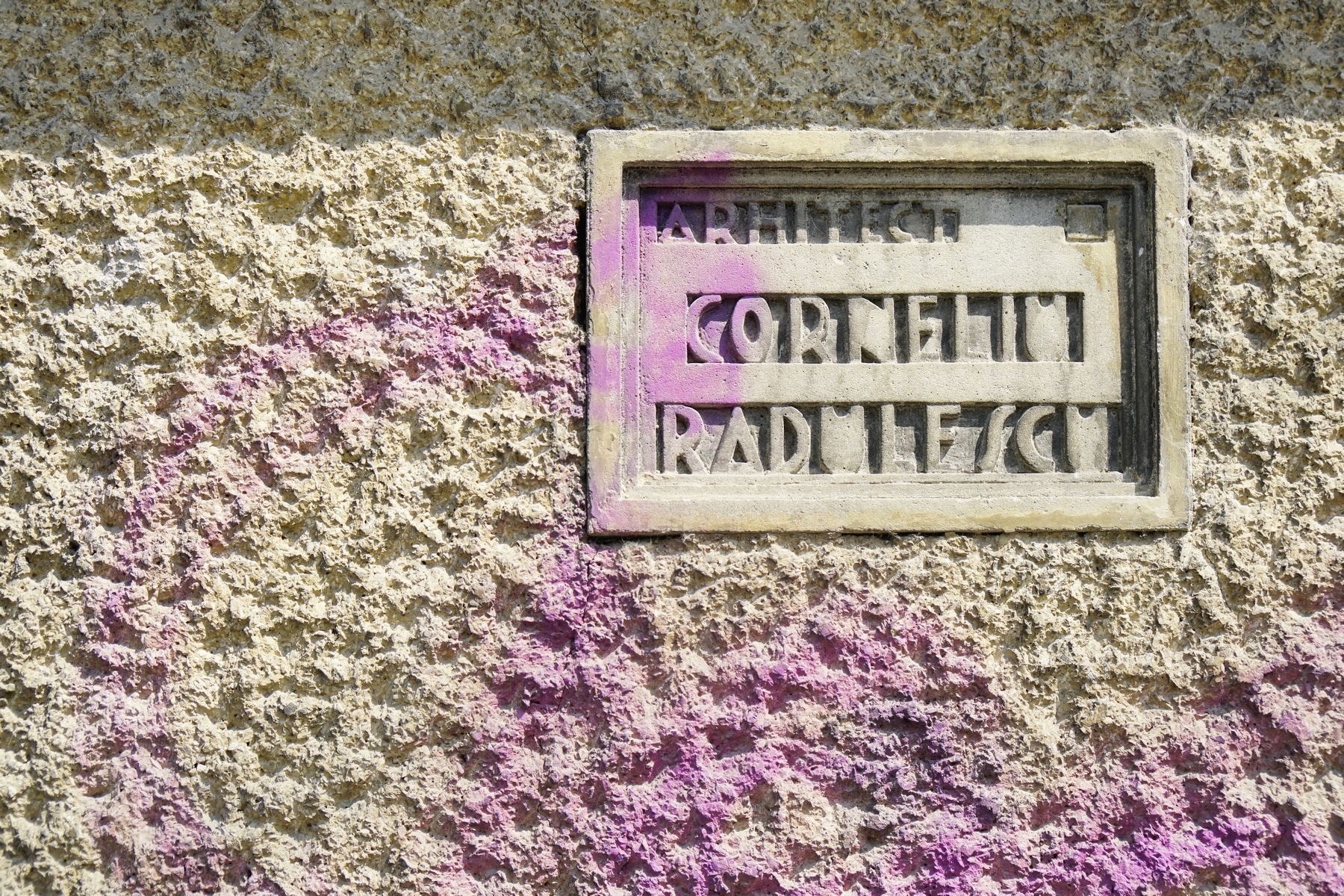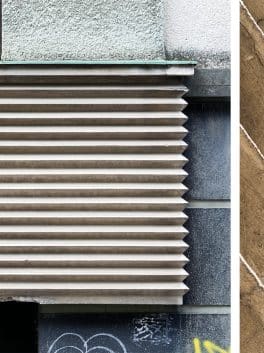
Historical plasterwork: Practical research. Stage II
February 13, 2023
This year Pro Patrimonio starts a new study and research project for the facades of historical buildings in Romania, “Forgotten Textures – Historical Plasterwork. Research and practical studies for repair and maintenance”. The project started in 2019 – which aimed to inventory and learn about the types of modernist plaster and textures, understand the recipes and types of deterioration – will thus enter a new, more complex phase. The aim is to study methods of repairing deterioration by collecting and making out more extensive samples, analysing materials, accessing restoration sites for study and testing, working with public institutions, material suppliers and contractors.
Need
Many requests to continue and deepen this initial research have followed throughout this period, a sign that the need to know more exists among professionals – both architects, engineers – and the general public interested in the preservation or recovery of historic buildings. This has led to further investigation through a more extensive study that combines the practical with the theoretical and brings new, more complex data.
The project team is now made up of specialists, architects and historians, from Bucharest and Timisoara including case studies from these cities. In order to widen the scope of the investigation, cases from other cities are also of interest. For the practical part, the aim is to collect samples of various historical plasterwork and analyse them in the laboratory; to get in contact with the building sites in progress in order to observe and document the interventions; to carry out more precise measurements in situ (e.g. the humidity of the wall in case of degradation / detachment from the plaster support).
On the basis of the types of damage already identified in Stage I (dirt, cracks, detachment of support and graffiti), a database will be structured and processed to find possible solutions for intervention. The solutions will be proposed for testing on ongoing sites following collaboration protocols.
The study methodology will aim to identify the causes of degradation, measure/quantify them, analyse the possibilities to stop degradation and intervention solutions. The principle of authenticity will be taken into account, by preserving as much as possible of the original substance. In cases of restoration, emphasis will be placed on reproducing the original recipes and materials. The solutions proposed or documented during the study will be critically analysed, with advantages, disadvantages, limitations and conditions of use.
The project aims to collect and analyse the information and solutions tested. These will then be published on the Foundation’s website in an area dedicated to this topic and the materials will be organised by plaster typologies and recipes, studies and intervention tests.
Study directions
The main directions of study will be:
- Direct collection of samples and direct measurements of physico-chemical data of the underlying layers (composition, moisture) and laboratory analysis of the samples taken. Comparative analysis in two or three specialised laboratories is proposed to better understand the composition of the mortars and the nature of the materials. The physico-chemical measurements aim at correlating the data obtained with the types of degradation observed;
- Indirect collection of information from ongoing construction sites (type of degradation, recipes, mode of intervention) through identification of sites in progress and establishing of contacts with site managers;
- Literature research, consultation with system and material manufacturers and proposals of details and mode of intervention for different cases;
- Practical testing of some of the studied solutions on ongoing sites, partners in this research;
- Ongoing communication of the project by uploading on the Foundation’s website the information analysed and the recommendations or solutions tested and in the form of regular debate with the professional community. The solutions presented will be critically analysed and presented with advantages, disadvantages, limitations and conditions of use;
- Involvement of partners in the study: town halls, directorates of culture, building owners, associations, manufacturers of systems, rehabilitation and repair products.
“Forgotten Textures – Historical Plasterwork. Research and practical studies for repair and maintenance” is a project carried out by Pro Patrimonio Foundation. supported by the Order of Architects of Romania from the Architecture Stamp and PSC Group.
2019, foto Andrei Mărgulescu
Resources
Forgotten Textures: Inter-war Bucharest
Forgotten Textures: Inter-war Bucharest. Plastering Recipe Book, Pro Patrimonio 2019/ second edition, 2021
SOS patrimoniul. Intervenții civice
Project team
Serban Sturdza. Specialist counselor throughout the project, president of Pro Patrimonio Romania, renowned architect and restorer, president of the Romanian Order of Architects (2002-2008), corresponding member of the Romanian Academy – Arts, Architecture and Audiovisual Section (since 2010), promoter of learning through experimental workshops, interested in crafts, cultural pathways, urban regeneration and rehabilitation of public space.
Raluca Munteanu. She is project coordinator for the foundation since 2011, architect with 20 years of experience in the field of architecture. Graduate of the Ion Mincu University of Architecture and Urbanism, Master’s course at the Fachhochschule in Cologne through a DAAD scholarship, course on Wood Conservation and Restoration Techniques organized by Riksantikvaren Norway and ICCROM, since June 2020 expert member of ICOMOS.
Marius Moldovan. After graduate studies in information technology, he studied art history with a focus on architectural history and classical archaeology at the University of Vienna and heritage conservation and research at the University of Bamberg. Back home, he wrote his master’s thesis on the archaeology of architecture in Viscri, which includes a thorough documentation of the fortified church and news on its construction history. He is now involved in inventorying, documenting, researching and conserving respectively restoring the built heritage.
Ruxandra Sacaliș. Architect and product designer, with an MSc in Historic Conservation at Oxford Brookes University, UK (2012); resident and admirer of old Bucharest. She participated in Pro Patriomonio Foundation’s creation of the guide about interwar Bucharest plasterwork (2019) and in the Honest Goods design collection project exploring the dialogue between craft and object design (2016 and 2022).
Raluca Marțiș. Communications officer for all the foundation’s projects since 2017, construction engineer and economist with 20 years of marcom experience. Passionate about heritage, architecture and society and building bridges between these fields and business.
Also read:
Call for participation










